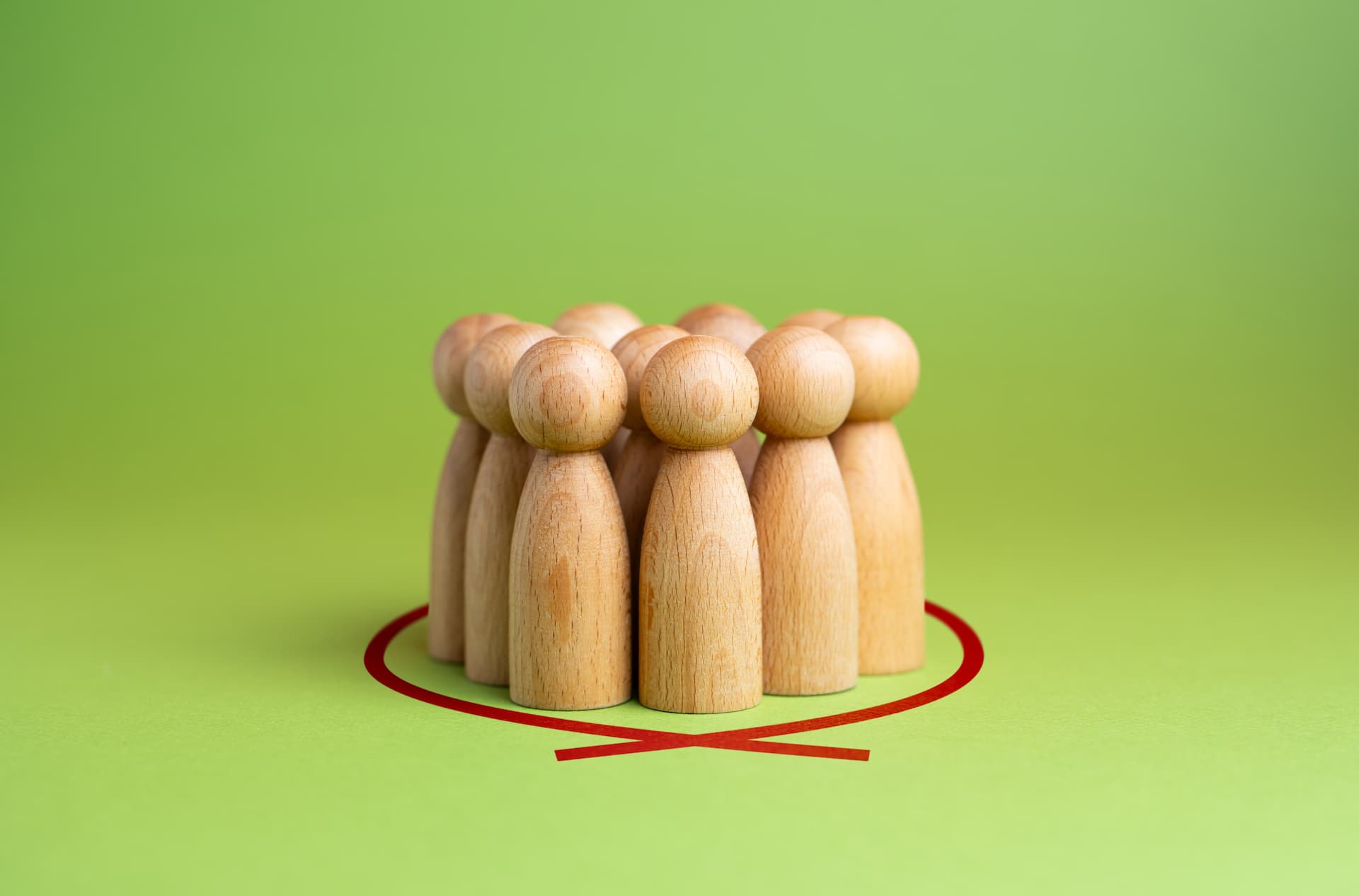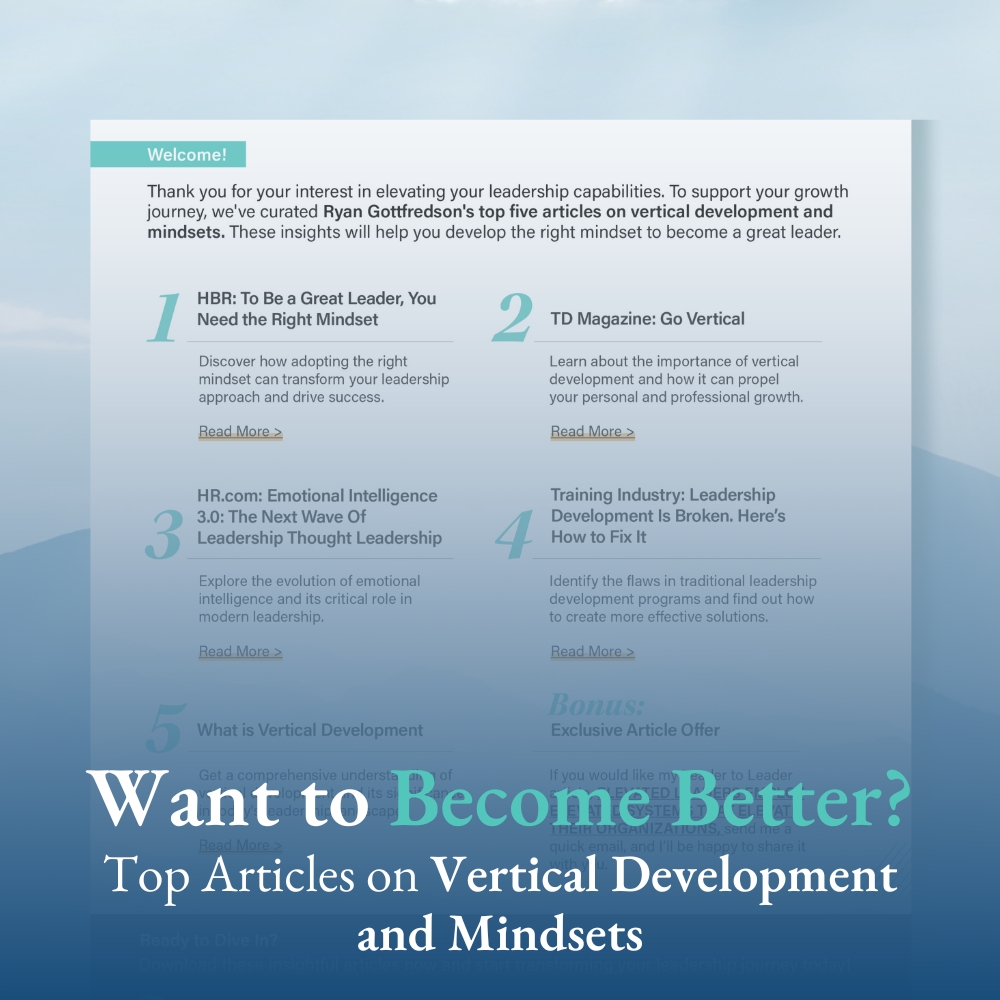We want better leaders and we want to become better leaders. Unfortunately, commonly referenced statistics suggest that the majority of leaders are falling significantly below expectations.
Improving our leadership and that of others should be a priority.
In this series I am going to make a bold claim that I believe is key to transformationally elevating our leadership effectiveness. The claim is:
Leadership ineffectiveness is rooted in leaders’ trauma
If this is true, it has a very powerful implication:
In order to help leaders significantly transform, we need to help them heal from their past trauma
In this article, I will explore this claim, its implications, and how we can help ourselves and other leaders heal to unlock the full potential in our leadership effectiveness.
Let’s start at the top: What is trauma?
What is Trauma?
To understand what trauma is and ultimately the negative effect that trauma has on leaders, we must start by talking about stress.
Stress is not bad. Our body and its nervous system are designed to help us experience stress and recover from stress. For example, if we find ourselves in a potentially dangerous situation, our nervous system will shoot adrenaline into our body, preparing us to unleash the Jason Bourne within us. Once we are out of this situation, our nervous system will work to help us regulate.
Unfortunately, our body and its nervous system cannot take on an unlimited stress load. In fact, everyone has a different stress bearing capacity.
When the stress that we experience exceeds our stress-bearing capacity, our body’s nervous system is pushed beyond its limits, and engages in radical responses to help us survive the trauma. Thus, trauma is not what happens to us, but rather our body’s response to what happens to us. It just so happens that when our nervous system engages in these radical responses, the consequences on our body’s nervous system are quite severe and semi-permanent.
I’ll dive into the specifics of these consequences below. But for now, to concisely summarize these consequences, trauma causes one to become wired for self-protection, and with that comes greater issues with appropriately and effectively reading signals in one’s environment.
Stated differently, a healthy stress response system will accurately interpret dangerous situations as being dangerous and safe situations as being safe. But, a trauma-affected stress response system will commonly interpret safe situations as dangerous (for example, we might interpret admitting that we are wrong as being dangerous) and dangerous situations as being safe (such as engaging in drug or alcohol abuse).
Three Sources of Trauma
Research on trauma has found that there are three primary sources of trauma, or three common causes of stress response system adaptations that may protect us in the moment, but generally hold us back as leaders. These sources involve:
- Prenatal stress – This most commonly occurs when a pregnant mother engages in drug or alcohol use or experiences physical abuse
- Significant stress – These are single-situation experiences that are intensely stressful. Possible examples include experiencing physical or sexual abuse or seeing someone murdered or raped.
- Prolonged stress – This occurs when someone experiences prolonged stress (can range from low to high) that is uncontrollable and unpredictable. Possible examples include neglect or poor workplace culture.
Trauma Statistics
Research estimates suggest that 75% of people have experienced one of the three forms of trauma above. This means that most of us likely have stress response systems that are inhibited. And, most of the people around us do as well.
Knowing these statistics, we should not be surprised that most leaders have stress response systems that are inhibited. And, what I am going to suggest through the rest of this series is that it is these faulty stress response systems that cause leaders to commonly operate in detrimental ways. I am personally learning this more and more as I awaken more fully to my trauma and role it currently plays in how I see and make meaning of my world.
While it is never fun to talk about trauma, there is something very beautiful about making this connection between trauma and leader ineffectiveness:
Leadership development becomes about helping people to heal
Intro to the Neurological and Primary Consequences of Trauma
As mentioned, when our body experiences stress that exceeds our body’s capacity to deal with that stress, our nervous system adapts to help us survive that moment. While these adaptations may help us survive that moment, they are often debilitating when we operate in contexts where our trauma is unlikely to occur. The following are four common consequences of trauma.
Neurological and Primary Consequence 1 – Disassociation
When we experience a situation where the stress exceeds our stress response system’s capacity, our body recognizes that we are in danger. To help limit the danger and the pain, our mind disassociates from our body.
This disassociation occurs in the moment of trauma, but also after the trauma.
Let me give you a sad and extreme example.
When someone is sexually assaulted, it is not uncommon for them to experience an “out of body” experience. Effectively they go numb. This is the body and the mind protecting them from the pain and the hurt in the moment.
But, the pain of trauma lingers, often in the form of shame and emotional pain. To limit that shame and pain, our mind sustains this disassociation and continues with the numbness.
Neurological and Primary Consequence 2 – Disintegration
When our mind disassociates from our body, a neurological change occurs. We have long-range neural connections that connect and integrate our three major brain regions (reptilian, mammalian, and human brains).
In an ideal world, our brain will be integrated, meaning that the wiring across these regions works well enough that all three of these brain regions work effectively together.
But, when disassociation occurs, these long-range neural connections become harmed and this prevents the three major brain regions from working effectively together.
Specifically, what ends up happening is that our reptilian and mammalian brains operate on overdrive and our human brain is unable to effectively step in and regulate the more primitive and emotional parts of our mind.
Neurological and Primary Consequence 3 – Misencoding
One of the results of dissociation and disintegration is misencoding.
Our mind is an encoding machine. It is constantly taking in information and then interpreting that information. One of its primary encoding jobs is to interpret safe things as safe and dangerous things as dangerous. The more accurately our brain encodes information, the more effectively we can navigate our world.
Unfortunately, disintegration inhibits our ability to encode accurately. We start to see safe things as dangerous and dangerous things as safe.
For example, if we are learning a new skill and we fail in the practicing of that skill, many people (those with a fixed mindset) see that failure as a signal that they are a failure. Failure in practice is not a dangerous thing, it is a safe thing that is commonly interpreted as being dangerous. By misencoding failure in this way, we end up limiting our ability to learn and grow.
Neurological and Primary Consequence 4 – Shrinking Window of Tolerance
Another effect of disintegration is a shrinking of our window of tolerance.
Our window of tolerance is a term used to describe a zone or state of arousal where a person’s brain is functioning well and is effectively processing stimuli. When people are within this zone or state, they are able to readily receive, process, and integrate information and respond to the demands of everyday life without feeling overwhelmed or withdrawn. Also, it is only in this state where we can be present and mindful. It is the optimal zone for us to operate within.
Ideally, we would like to have a broad window of tolerance where we can take on a decent amount of stress without losing control of our cognitive and emotional resources.
When our mind is disintegrated, our window of tolerance shrinks. We become easier to be “triggered,” and sent outside our window of tolerance, to a place where we become emotionally overwhelmed. In this state, we are unable to effectively process and respond to our world, either because we have become too aroused (feel anxious) or because we have become frozen with emotional numbness.
How the Primary Consequences Affect Leaders
I’ll start the conversation about how trauma affects leaders here but will continue this conversation below.
The reality is that at least 70% of people have experienced significant adverse experiences that have resulted in a certain degree of the primary consequences above.
Essentially, all of us, because of the trauma we have experienced, have been and continue to be influenced by the consequences above. Now, the degree of these effects is going to be contingent upon the number and severity of the traumatic experiences that we have encountered, among a variety of other factors including our genetics and social support system.
None of us are perfect encoders and each of us has a more narrow-than-optimal window of tolerance. This means that at times, we process and operate in a way that falls short of our ideal self. And, it is all connected back to trauma.
In extreme cases, this manifests as abusive leadership. But, most of the time, this is more similar to death by a thousand paper cuts.
Either way, when leaders struggle with dissociation, disintegration, misencoding, and a narrow window of tolerance, they operate in a less-than-ideal manner. And, it is this less-than-ideal operation that leads to the following leadership statistics:
- 75% of employees say that their direct leader is the worst and most stressful part of their job.
- 65% of employees state that they would rather have a new boss over more pay
- 60% of employees report that their direct leader damages their self-esteem
Let me explain why this is as we jump into the secondary consequences of trauma.
Trauma’s Impact on Leaders’ (In)Effectiveness (The Secondary Consequences of Trauma)
So, how does past trauma affect leadership quality? To explain, I’ll step into a couple of characteristics that effective leaders need to possess and how the neurological adaptations of trauma impede one’s ability to possess these characteristics. We’ll start with emotional intelligence.
Secondary Consequence of Trauma 1 – Diminished Emotional Intelligence
Emotional intelligence (EQ) is having the capacity to do two things:
- Accurately recognize and effectively manage one’s internal emotions
- Accurately recognize and effectively navigate the emotions of others
Essentially, EQ is having both self-awareness and other-awareness.
Emotional intelligence is critical to leadership effectiveness. Here are some research findings associated with EQ:
- Of internal attributes assessed, EQ was the strongest predictor of overall success
- EQ is 4x more important than IQ
- 90% of top performers have high EQ
- EQ is responsible for 58% of job performance
- People with high EQ make $29,000 more annually than their low EQ counterparts
- 75% of career derailments are due to an issue related to emotional intelligence
So how does trauma impact a leader’s EQ?
To answer that, we need to dive back into the primary consequences of trauma.
The first primary consequence was disassociation, the disconnection between mind and body. When leaders are disassociated, they have a hard time connecting to their body, or in other words, being self-aware.
Have you ever met a leader that is not willing to admit faults or be vulnerable? This is a self-protection mechanism that is rooted in disassociation. In fact, their disassociation prevents them from even seeing and recognizing their thoughts.
The second primary consequence of trauma was disintegration, which is also associated with misencoding and a more narrow window of tolerance. When leaders are disintegrated, misencode their world (sees safe things as dangerous), and have a narrow window of tolerance, they are hypersensitive to things that will affect them, and they are not as sensitive to others as they could be. They become so absorbed in their own needs, that they are unable to see and appreciate the needs of others.
In other words, disintegration causes a lack of other-awareness.
Together, trauma inhibits us from being emotionally intelligent.
Let me share a powerful example of how this might play out. This comes from The Body Keeps the Score. In this book, Bessel Van Der Kolk discusses a videotaped interaction between a mother and baby as follows:
“[This video features] a young mother playing with her three-month-old infant. Everything was going well until the baby pulled back and turned his head away, signaling that he needed a break. But the mother did not pick up on his cue, and she intensified her efforts to engage him by bringing her face closer to his and increasing the volume of her voice. When he recoiled even more, she kept bouncing and poking him. Finally, he started to scream, at which point the mother put him down and walked away, looking crestfallen.”
What is interesting in this example is that the mother walked away from this situation feeling like the child didn’t love her. But, the reality is very different. Because she was unable to accurately encode her child’s initial cues, she engaged in well-intended behaviors that were essentially the opposite of what the child needed in that moment. In other words, she saw the baby as the problem, but it was her that was the problem.
This phenomenon is not unique to parents. It happens all the time in the relationship between leaders and their subordinates. This is why 65% of employees say that they would rather have a new boss over more pay. Leaders are frequently misencoding their situations and providing direction and attention in a way that is frustrating instead of helpful.
When we make this connection between trauma and EQ, it becomes very obvious that if we want to improve our EQ, we need to heal and upgrade our body’s nervous system.
Secondary Consequence of Trauma 2 – Diminished Agility
Trauma doesn’t just hinder our ability to be emotionally intelligent, it also hinders our ability to be agile and future-ready.
Being agile is one’s ability to swiftly and positively change and adapt to one’s changing and dynamic environment.
As the change, pressure, uncertainty, and complexity of our world accelerates, possessing this attribute of agility is becoming increasingly essential.
In order to see the connection between trauma and resistance to agility, it is going to be helpful explore:
- The characteristics of agility
- The opposite of agility and its characteristics
The characteristics of someone who is agile include:
- Innovative
- Change-willing
- Open-minded
- Opportunistic
- Purpose-seeking
- Problem-solving
To identify the opposite of agility, let’s first start by exploring the opposite of the characteristics above. I think the following are good fits:
- Traditional
- Change-resistant
- Close-minded
- Risk-adverse
- Comfort-seeking
- Problem-avoiding
If you were to put a label that summarizes these characteristics, what would that be?
To me, one word that fits is: Protective.

The job of our stress response system is to protect us. When we experience trauma (stressful situations that exceed our body’s stress response system), our body, via disassociation and disintegration, becomes over-sensitive to potential dangers as a way to protect us. Also, our over-sensitive stress response system induces our body to nonconsciously become more inclined to seek after certainty and comfort.
This oversensitivity to potential dangers is what causes protective people from being agile. They are holding onto things that feel certain and/or comfortable, which shows up as characteristics of being traditional, change-resistant, close-minded, risk-adverse, comfort-seeking, and problem-avoiding.
To someone who has experienced trauma, such sensitivity to dangers and subsequent protectiveness feels right. It feels justified. In the moment, such people have a hard time recognizing that they are seeing relatively safe things, like embracing change or challenges, as being dangerous. This is misencoding and possessing a narrow window of tolerance at its finest.
In summary, those who have a been through trauma, and have not healed from that trauma, commonly have a short-term focus that inhibits them from having the agility necessary to stay relevant in the long term.
But, if we can heal from the effects of our trauma, become less sensitive to potential dangers, and do a better job of not encoding safe things as being dangerous. We can create the space and develop the centeredness to be more open to embracing change. (We are getting closer to discussing how to heal from the neurological impact of our trauma).
Healing from Past Trauma is Key to Elevate Our Leadership
When we understand the harm trauma causes, it becomes clear to see what the goals of trauma healing are. They are to:
- Create better association between our mind and body
- Integrate the mind so that our three brain regions work more effectively together
- Help us to encode our world more effectively
- Expand our windows of tolerance
When these upgrades occur, it will radically and transformationally improve one’s leadership effectiveness.
There are two primary approaches to help people heal from their trauma. They are the top-down approach and the bottom-up approach.
Top-Down Approach to Trauma Healing
I previously indicated that since trauma causes disassociation (a breaking of the mind-body connection) and disintegration (neural wiring disruption in the mind), any approach toward healing requires a focus on re-association and integration.
In top-down approaches, the idea is to start at the “top” of our head (our human brain, where cognition occurs) and move down into more of the implicit processes of our mammalian and reptilian brains, and even further, into the feelings of our body. As we go through this process of consciously and cognitively connecting with ourselves, we help the body and mind reconnect (re-association) and we start to create better integration of the wiring in our mind.
The Best Top-Down Approach: Focus on Mindsets
While there are surely a variety of different top-down approaches, the approach that I have found the most helpful is through a focus on mindsets.
There are three reasons why focusing on mindsets are valuable to focus on when healing the mind:
- Our mindsets are directly involved in the neural connections associated with integration.
- Our mindsets are something that can be developed.
- All people have mindsets, but only some are conscious of their mindsets. The process of becoming conscious of our mindsets is the first part of this top-down healing process.
When we have “negative” mindsets or mindsets that are less-than-cognitively and emotionally sophisticated, this is a signal that we are living with trauma-induced neurological consequences.
As we shift our mindsets from being negative to being positive, or from being less to more cognitively and emotionally sophisticated, we are actually healing our mind.
There are three general steps for healing our minds through a focus on mindsets.
- Step 1: Awaken to our mindsets
We all have mindsets, and for most people, they are operating below the level of our consciousness to influence how we think, learn, and behave.
So, the first step in improving our mindsets to heal our mind is to become conscious of our mindsets.
There are two things that I do to help people with this.
- First, I have them take my mindset assessment. This provides them with rather objective information about the quality of their mindsets.
- Second, I teach them about the different mindset sets that are out there and how they cause us to think, learn, and behave differently.
Between these two steps, what I am doing is I am putting labels and descriptions to mindsets. This is powerful because it is very difficult to awaken to something without a name and description of it. But, once we have a name and description, it becomes real to us. It is something that we can evaluate in ourselves, and we are able to identify healthier mindsets to develop.
- Step 2: Learn About Mindsets
Gaining labels and descriptions to mindsets is the starting point; but, it is far from the finish line. My experience has taught me that if people want to truly awaken to the quality of their mindsets (most people think they have more positive mindsets than they really do) and get a sense of how their life can be different with more positive mindsets, they have to engage in deep learning about the different mindsets.
The more we know about mindsets, the more we can spot them in ourselves and in others.
- Step 3: Exercise Our Mindsets
Our mindset neural connections are not too different from our muscles. They shrink if we don’t use them and they strengthen if we do. Thus, if we want to develop more positive mindsets, we need to exercise our positive mindset neural connections.
But, just as with our muscles, becoming strong takes continual effort over time. Working out once won’t make us strong.
When it comes to developing positive mindsets, science tells us that if we spend 5-15 minutes a day on a regular basis, we are going to experience significant long-term effects on our mindsets in as little as a few weeks.
If you would like guidance on identifying mindset strengthening exercises, take my mindset assessment. The results include PDFs of such exercises. Or, you could consider my Digital Mindset Coach, which is an email or app that gives you regular exercises for your positive mindset neural connections.
Bottom-Up Approach to Trauma Healing
Part 5 indicated that since trauma causes disassociation (a breaking of the mind-body connection) and disintegration (neural wiring disruption in the mind), any approach toward healing requires a focus on re-association and integration.
In bottom-up approaches, the idea is to start in our body, (1) move up into the non-conscious processes of our mammalian and reptilian brains, and even further, into (2) the top part of our head, our human brain, where cognition occurs. As we go through this process of connecting with our body and its feelings and become more conscious of this connection, we help the body and mind reconnect (re-association), and we start to create better integration of the wiring in our mind.
The reality is that people who have been through trauma have a diminished ability to connect with their body. It is not uncommon for trauma survivors to have difficulty identifying items they are holding, sensing when they are hungry, recognizing that they need to go to the restroom, or sensing the beating of their heart. There are some interesting examples of this in the book, The Body Keeps the Score.
My personal experiences and my experiences working with leaders have taught me that bottom-up processes are best done with the guidance of a trained therapist. I say this because some of the approaches that I identify are things that people commonly do, but they may not get the healing benefit out of them because they aren’t as intentional about their healing as they could be.
Body Scan Meditations
Body scan meditations are guided meditations that help you connect with your body and the sensations within it. I use the app “Insight Timer.” In this app, I can find hundreds of such meditations.
Body Connection Activities
It is not uncommon for therapists to recommend body connection activities like yoga, pilates, kickboxing, massages, and horse riding. All of these activities, if done intentionally, can improve our mind-body connection.
Therapy
There are several different therapy modalities that involve this bottom-up approach. I have experienced two of these modalities, and I have personally found them incredibly helpful and self-awakening. They have also been found to be among the most effective treatments of trauma. They are:
- Internal Family Parts therapy (https://youtu.be/GdzH2YRmv6Y), and
- Eye Movement Desensitisation and Reprocessing (EMDR; https://youtu.be/iSHuFHFrUis)
I have included videos if you want to learn more about these.

The Benefits of Understanding the Connection between Past Trauma and Current Leadership Quality
To close, I want to share the three primary lessons I have learned as I have explored the connection between trauma and leadership (in)effectiveness.
Lesson #1: Bad leadership is generally trauma related
Research shows that almost 30% of bosses are toxic.
Do these “toxic” leaders see themselves as being toxic? NO! They see themselves as “Jack” in Jack and the Beanstalk, the hero. But, they are really the Giant. They can’t see it, but everyone else can.
Why are some leaders toxic to begin with? It is commonly because they have had traumatic experiences in their past that has led them to have a nervous system that causes them to:
- See safe things as being dangerous (e.g., disagreement, failure, problems, others)
- Have a narrow window of tolerance.
Their prior trauma prevents them from being in control of themselves, from being present, from being mindful, and from being centered.
Any poor leadership can be connected back to the two points above:
- Seeing safe things as being dangerous (e.g., disagreement, failure, problems, others)
- Having a narrow window of tolerance.
The same could be said for parents and employees as well.
And, the root of these two issues is trauma.
Lesson #2: If we truly want our leaders to improve, we have to focus on helping them heal
Honestly, when it comes to leadership development, few, if any, leadership developers or organizations are talking about helping their leaders heal from their past trauma.
This is because of three primary reason:
- They are not aware of the connection between trauma and leadership ineffectiveness
- They are apprehensive about how focusing on healing might be received
- They are not sure how to help leaders heal
Generally, leadership development programs focus on helping leaders learn what they need to DO to be effective. They are armed with research-backed to-do lists and sent out to execute.
While such efforts can be incrementally helpful, they don’t help leaders:
- Start to see safe things as being safe
- Broaden their window of tolerance
Thus, when push comes to shove, stress and pressure rise, and uncertainty and complexity abound, our leaders will lose control, lose contact with the present, become mindless, and get thrown off-center. And, when these things occur, they will make less-than-optimal decisions that will have long-term negative implications for their organizations and employees.
If we truly want our leaders to improve, we have to focus on helping them heal their mind. The more their minds are healed, the more they will be able to be in control, present, mindful, and centered despite the chaos of their environment and the challenges they face.
The process of helping people upgrade their nervous system, or their internal operating system, is called vertical development.
Lesson #3: Healing leaders will heal the world
Leaders are high-leverage individuals. Depending upon their position, their decisions affect hundreds, thousands, millions, or billions.
You can’t tell me that the decisions of Joe Biden, Mark Zuckerberg, or Elon Musk do not have the ability to influence billions of people. They can.
What happens if our leaders are making decisions from a place where they:
- Are seeing safe things as dangerous
- Have a narrow window of tolerance?
You have probably heard the saying, “hurt people hurt people.” That is true.
But, I also believe it is equally valid to say, “healed people heal people.”
And, since leaders are in such high-leverage positions, if they come from a healed place, they will make decisions and create conditions that are more conducive to the healing of others.
Summary
Thank you for joining me in this journey of exploring the connection between trauma and leadership (in)effectiveness. I hope it has helped you become more trauma-informed, more compassionate/empathetic, and more focused on healing (either for yourself or for the leaders that you work with). (I feel that is what I have gotten out of this journey.)
As I mentioned, I believe that if we can help leaders (1) become more trauma-informed and (2) heal, we can heal our world.











One Response
Ryan Gottfredson’s blog essay on how prior trauma influences leadership quality is thought intriguing. I previously faced a difficult scenario in which my previous trauma impacted my leadership style. Self-awareness and introspection enabled me to realize how it was influencing my leadership decisions and conduct. Echelon Front’s recommended reading list includes works on self-awareness and emotional intelligence, which provide useful insights for leaders seeking to understand and overcome the impacts of previous trauma. For additional information on this topic, visit https://echelonfront.com/books/ suggestions.